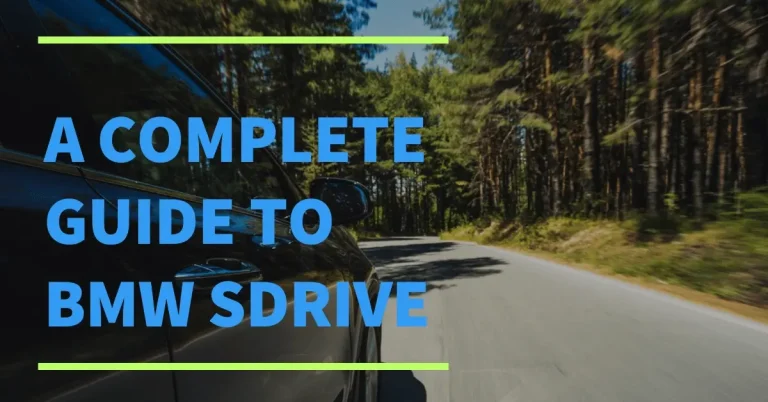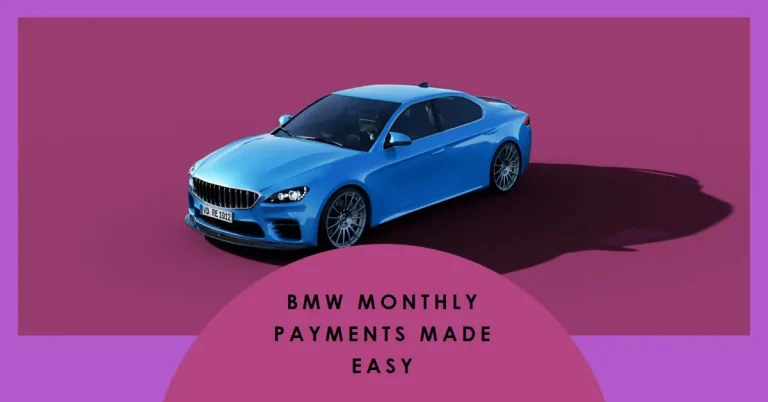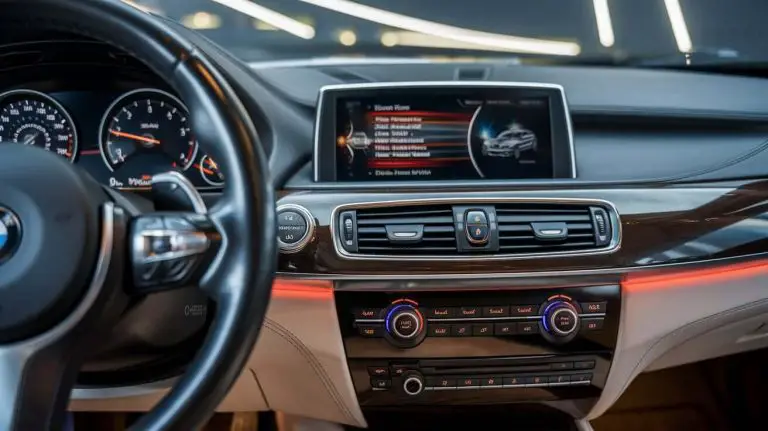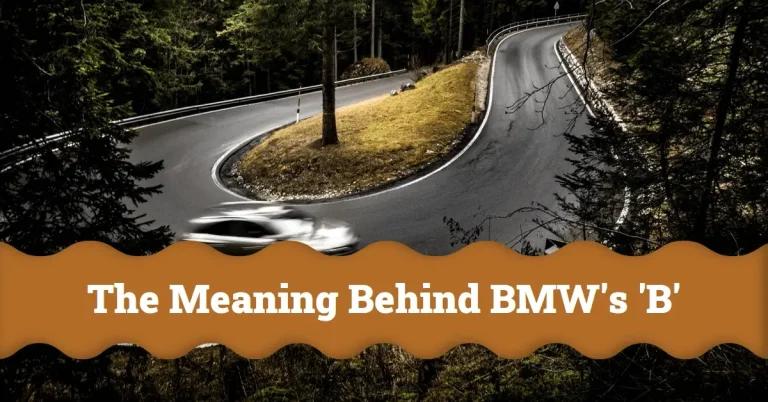How to Decode Your BMW VIN Number to Uncover Model, Year, Specs & History
Decoding your BMW’s Vehicle Identification Number (VIN) is like unlocking the secrets hidden within your car’s unique fingerprint.
By decoding the combination of 17 letters and numbers that make up your VIN, you can pinpoint key details about your BMW including:
- Model
- Year
- Assembly plant
- Engine size
- Transmission type
- Body style
- And more
Learning how to break down a BMW VIN only takes a few minutes, but gives you a wealth of knowledge about your vehicle’s heritage and specifications.
Keep reading this comprehensive guide to learn how to decode every digit and character in your BMW’s VIN.
We’ll go over:
- Where to find your BMW VIN
- VIN structure and format
- Meaning of each VIN character
- Decoding model codes
- Verifying the check digit
- Identifying production year
- Looking up BMW assembly plants
- Resources for full VIN decoding
With this BMW VIN decoder guide, you’ll be able to split a VIN and understand the full backstory of your Bimmer. Let’s get started.
Where to Locate Your BMW VIN
The VIN is engraved in several locations on your BMW:
- Dashboard (visible through windshield) – The primary VIN is located on the lower passenger side of the dash. It’s visible through the windshield on the driver’s side.
- Driver’s side door jamb – Open the driver’s door and look for an engraved VIN plate on the door jamb, near the latch.
- Front of engine block – Pop the hood and find the VIN on the right side of the engine block, near the bottom.
- Registration and title paperwork – Your VIN is also listed on your vehicle registration and title documents.
BMWs sold in the US from 1981-2009 may have a public VIN (dash/door jamb) that differs from the confidential VIN on the engine block. This was an anti-theft measure. Make sure to use the public VIN for decoding.
BMW VIN Format and Structure
All BMW VINs since the 1980s consist of a specific 17-character sequence. Here is what each component means:
- Positions 1-3: These first three characters identify the country of origin where your BMW was manufactured:
WBA = Germany
WBS = Germany
WBAH = Germany
WBAL = Germany
WBYA = Germany
2T = Thailand
TRU = South Africa
- Positions 4-8: The next five digits make up the vehicle descriptor section that identifies the exact model. We’ll decode BMW model codes later.
- Position 9: The ninth character is a check digit used to verify the accuracy of the engraved VIN and protect against fraud.
- Position 10: This digit indicates the BMW model year:
A – 2010
B – 2011
C – 2012
D – 2013
E – 2014
F – 2015
G – 2016
H – 2017
J – 2018
K – 2019 L – 2020 M – 2021 N – 2022 P – 2023 R – 2024 S – 2025
- Position 11: The 11th character specifies the BMW assembly plant where the vehicle was manufactured.
- Positions 12-17: The last six characters make up the sequential production number ranging from 000001 to 999999, indicating the order in which your BMW came off the production line.
Now that you’re familiar with the basic BMW VIN structure, let’s look at how to decode the most important sections.
How to Decode BMW Model Codes
The 4th through 8th digits are crucial for identifying the specific BMW model. These five characters make up the BMW model code.
For example, E46 is the model code for BMW 3 Series produced from 1999-2006.
Here are some common BMW model codes:
- E21 – 3 Series 1975-1983
- E30 – 3 Series 1982-1994
- E36 – 3 Series 1990-2000
- E46 – 3 Series 1998-2006
- E90 – 3 Series Sedan 2006–2011
- E91 – 3 Series Wagon 2006–2012
- E92 – 3 Series Coupe 2006–2013
- E93 – 3 Series Convertible 2006–2013
- F30 – 3 Series Sedan 2012-2018
- F31 – 3 Series Wagon 2013-2015
- F32 – 4 Series Coupe 2014-2020
- F33 – 4 Series Convertible 2014–2020
- F34 – 3 Series GT 2014-2019
- E83 – 1 Series Hatchback 2004–2011
- E82 – 1 Series Coupe 2008–2013
- E88 – 1 Series Convertible 2008–2015
- F20 – 1 Series 2012-2019
- F21 – 2 Series Coupe & Convertible 2014–2020
- E70 – X5 2006–2013
- F15 – X5 2013-2018
- E53 – X5 1999–2006
- E83 – X3 2004–2010
- F25 – X3 2011–2017
- G01 – X3 2017-present
These are just a few examples. There are many additional BMW models. Refer to a full decoder to look up any 5-character BMW model code.
How to Verify the Check Digit
Double checking the check digit in the 9th position is important for confirming your BMW VIN is legitimate.
Here is how the VIN check digit algorithm works:
Each of the 17 VIN characters corresponds to a number 1-9 or a value of 0 for letters:
A = 1
B = 2
C = 3
D = 4 E = 5 F = 6 G = 7 H = 8 J = 1 K = 2 L = 3 M = 4 N = 5 P = 7 R = 9 S = 2 T = 3 U = 4 V = 5 W = 6 X = 7 Y = 8 Z = 9
To verify the check digit:
- Replace each VIN letter with its corresponding number value
- Multiply the digits in positions 1, 3, 5, 7, 9, and 11 by 9 and add those numbers together
- Multiply the digits in positions 2, 4, 6, 8, and 10 by 9 and add those
- Add the sums from Step 2 and 3 together
- Divide the total by 11
- The remainder should be equal to the check digit (position 9)
If your math does not result in the check digit value or a multiple of 11, then the VIN is invalid.
For example, say your BMW VIN is WBADE51090KP91417:
- Replace letters: 510301290117
- Multiply odd positions by 9 and add: 45 + 27 + 81 + 63 + 9 = 225
- Multiply even positions by 9 and add: 18 + 36 + 54 + 126 = 234
- Add totals: 225 + 234 = 459
- Divide by 11: 459/11 = 41 remainder 8
- Remainder of 8 matches check digit
This confirms the validity of the VIN!
How to Identify BMW Model Year
The 10th digit of the VIN reveals the model year of your BMW.
Here is what each letter stands for:
- A – 2010
- B – 2011
- C – 2012
- D – 2013
- E – 2014
- F – 2015
- G – 2016
- H – 2017
- J – 2018
- K – 2019
- L – 2020
- M – 2021
- N – 2022
- P – 2023
- R – 2024
- S – 2025
So for example, if the 10th character in your VIN is F, you have a 2015 model year BMW.
Easy as that! No guesswork needed to determine the year of your ride.
BMW Assembly Plants
The 11th VIN character provides clues into where your specific BMW was manufactured.
BMW has large assembly plants around the world including in Germany, the United States, South Africa, and Thailand.
Here is how to interpret the assembly plant code:
- 0,1 – Munich, Germany – The BMW headquarters factory and main plant. Produces 3, 5, 7 Series, M models, X models.
- 2 – Regensburg, Germany – Makes 1,2,3,4,5,6 Series and X models.
- 3 – Spartanburg, South Carolina – BMW’s largest global plant. Manufactures the X3, X4, X5, X6 and X7 SUV models.
- 4 – Dingolfing, Germany – Produces 5, 6, 7 Series, M models and E-drive electric cars.
- 5 – Pretoria, South Africa – Makes 3 Series models for export.
- 6 – Leipzig, Germany – Plant for 1 and 2 Series production.
- 7 – Rosslyn, South Africa – Produces 3 Series vehicles for African markets.
- 8 – Rayong, Thailand – Manufactures 3 and 5 series vehicles for Southeast Asian market.
- X – Contract assembly – Vehicles built by external partner companies.
- Z – BMW Academy – Prototypes and test vehicles.
So if you have an 11th VIN digit of 4, your BMW came off the line at the major Dingolfing, Germany plant. Or a 3 indicates your X5 was built at the Spartanburg, SC SUV-focused factory.
Full BMW VIN Decoder Resources
Hopefully you now understand how to break down and analyze the major components of your BMW VIN.
To take your decoding even further, there are several handy online VIN decoder tools that provide complete vehicle reports:
- Bimmer.work – Extensive BMW VIN decoder with production details
- NICB VINCheck – Free VIN check tool from National Insurance Crime Bureau
- vPIC – Official VIN lookup from National Motor Vehicle Title Information System
These online decoders can analyze all 17 digits and letters in your VIN and pull a full vehicle history report including:
- Model
- Year
- Trim package
- Engine size
- Transmission
- Drivetrain
- Exterior color
- Interior options
- Factory installed equipment/packages
- Mileage and title records
- Accident history
- Manufacturer recall info
To unlock the complete background of your BMW, plug your VIN into one of these online tools after following the basics steps in this guide.
Decode Your BMW VIN to Learn More About Your Vehicle
Learning how to decode a BMW VIN only takes a few minutes but provides invaluable insights into the heritage and unique characteristics of your vehicle.
All of the secrets hidden within those 17 letters and numbers will be revealed once you follow this BMW VIN decoder guide.
Understanding the country of origin, assembly plant, production sequence, model year, engine type and other specs gives you the full backstory on your Bimmer.
So locate your VIN, grab a pen and paper, and let’s get decoding! Splitting the VIN provides a fascinating look under the hood and gives you more appreciation for your BMW’s journey from factory to driveway.







